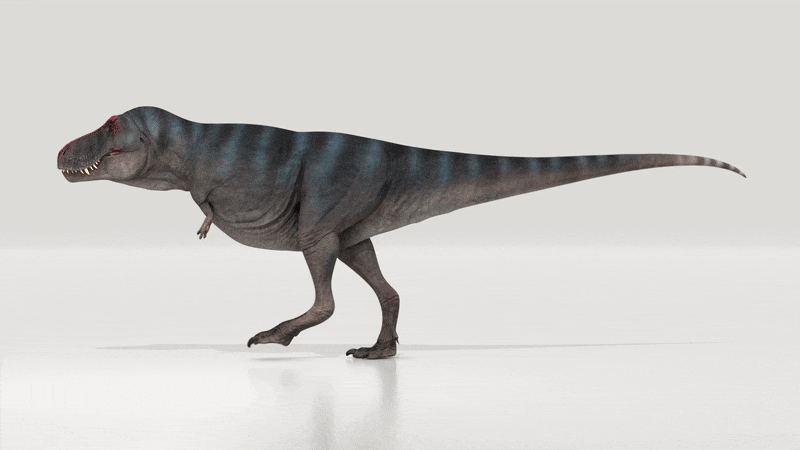Tyrannosaurs could not keep up with their young: their footprints demonstrate the difficulty of older specimens to move
He is about to end up run over, his mother saves himAdult T-Rexes couldn't keep up with their young, at least judging by their footprints. Research based on comparing the fossil footprints of various specimens of this dinosaur species demonstrates the difficulty of older specimens to move quickly.
Researchers at the University of New England found that young tyrannosaurs were much faster than their parents, suggesting that adults had a hard time keeping up with pups. This probably stemmed from the important difference in tonnage between youth and adults, according to the team.
The discovery is based on a series of fossilized tyrannosaurus footprints, which helped to understand how these animals moved at different stages of their development.
"Adult tyrannosaurs were believed to be more robust than younger specimens based on their relatively shorter hind legs and more massive skulls, but no one has so far explored the various stages of growth using fossil footprints, which are the only ones able to give us a snapshot of the legs as they appeared, with the contours of the soft and fleshy parts of the limbs that have rarely been preserved "he explains Nathan Enriquez, author of the study. "The results suggest that, as the tyrannosaurs got heavier and heavier, their legs also got bulkier."
There are several elements that influence the final shape of a footprint: soil composition and properties, exact position of the animal that left the footprint, geography of the surface - just to name a few. For this reason it is often difficult to interpret these traces left on the ground - especially the fossil ones. This explains why, until now, fossil footprints have rarely been used to understand the growth process of dinosaurs. The series of footprints used for this study, however, are still in excellent condition and show footprints belonging to individuals of the same species but of different ages.
(Read: This is what the T-rex cub looked like, a tender pile of feathers)
After selecting the footprints in the best state and therefore suitable for research, the team analyzed their contours using an approach called geometric morphometry. This special observation has put aside the simple differences in size between the footprints, focusing rather on those relating to the shape.
The most important difference found concerns the ratio between the surface occupied by the heel and the entire footprint, which is smaller in the smallest footprints. The team explained that the smaller footprints are slimmer, while the larger ones are also wider and have a larger heel area. This increase in heel area is a result of the animal increasing in size with advancing age, and its legs had to physically support the increase in mass, but it also suggests that older specimens were no longer able to reach the same speed as the youngest.

The researchers calculated the T. rex's walking speed by modeling the movement of its flexible tail. (@Rick Stikkelorum, Arthur Ulmann, Pasha van Bijlert)
Fonte: Journal of Vertebrate Paleontology
We also recommend:
- Discovered one of the most "extravagant" dinosaurs ever, completely different from any other known to date
- Sir David Attenborough answers 4-year-old Otis' question about dinosaurs
- Insects from prehistoric times were giants
- The "Sistine Chapel" of prehistoric times was found in the Amazon rainforest, thousands of paintings more than 12 thousand years ago


























